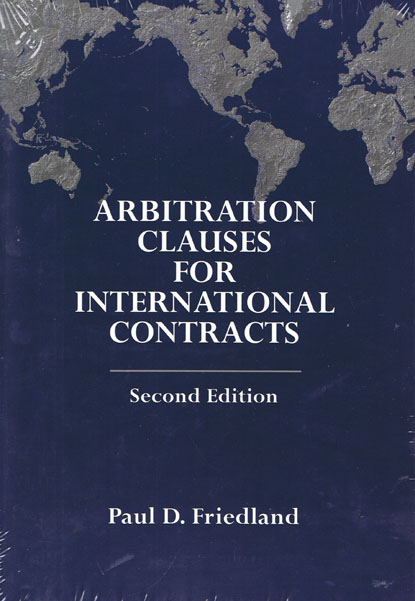We are now closed for the Christmas and New Year period, returning on Monday 5th January 2026. Orders placed during this time will be processed upon our return on 5th January.

This book, by a leading international arbitration practitioner, offers suggested language for every option that a drafter of an international arbitration may need. Following a succinct assessment of the choice between arbitration and litigation and commentary on the choices among arbitration fora and formats, the author presents an accessible how-to for drafting. While other works offer theory and a smattering of drafting tips, there is no other comprehensive collection of workable language, presented accessibly with easy-to-reference appendices. This book will be a regular reference for both in-house counsel and outside practitioners.
This book provides, in an accessible format, clauses that address all the significant issues that contracting parties face, and in any event should consider, when they decide to draft a dispute resolution clause for an international contract. Those who wish immediate access to suggested language may turn directly to the Appendices. Those who wish to understand the analysis that leads to the suggested language should read the text.
Chapter 1 discusses model and standard clauses for both institutional and non-administered (Ad-Hoc) arbitration.
Chapters 2 through 5 discuss the threshold issues faced by parties when they consider providing for a dispute resolution method in their international contract. First, should the contract provide for arbitration (by means of an arbitration clause) or litigation (by means of a consent to the jurisdiction of a designated forum)? Second, if arbitration is selected, should it be administered by an institution or non-administered (ad hoc)? Third, if institutional arbitration is selected, which institution? Fourth, how should the place of arbitration be chosen and what are the implications of the choice?
Chapter 6 is a "how-to" discussion of drafting arbitration clauses, and comprises the largest section of this book. It divides the elements of an arbitration clause among three categories: essential elements; recommended elements; and optional elements. For each element, Chapter 5 offers in the text examples of workable contract language, and an explanation of alternatives. For ease of reference, the Appendices set out these same recommended clauses.
Chapter 7 discusses the utility of providing for negotiation or mediation as a mandatory first step before resort to arbitration or litigation in international contracts, and suggests language that provides for such a first step without pitfalls.
Chapters 8 through 12 address special situations that may alter the considerations that lead to the selection or rejection of the clauses discussed in Chapter 6. Chapter 8 deals with joinder and intervention clauses for multi-party contracts. Chapter 9 discusses consolidation clauses for related contracts. Chapter 10 addresses expert determination clauses and dispute boards. Chapter 11 analyzes the special issues presented by arbitration clauses in contracts with sovereigns. Chapter 12 concentrates on Chinese arbitration law and contacts.
Chapter 13 addresses choice of law clauses, a subject distinct from dispute resolution per se but one that nevertheless should be addressed in any international contract.
New to the Second Editon: